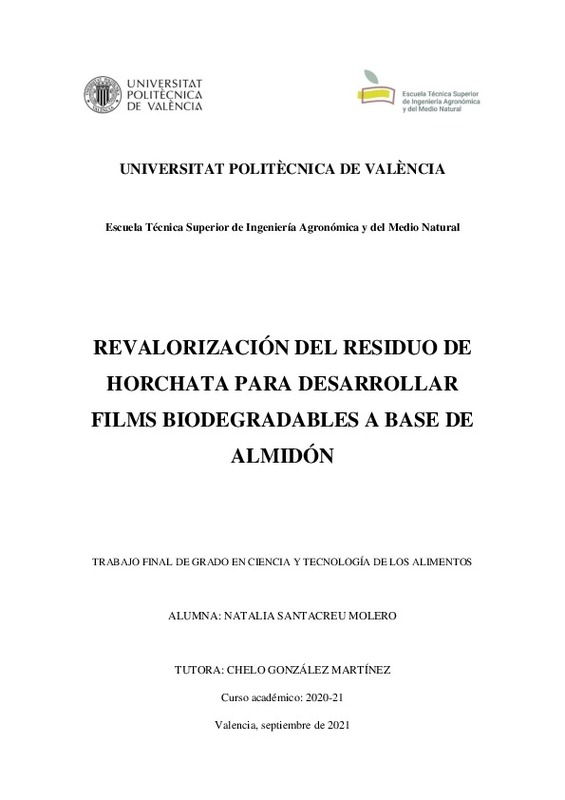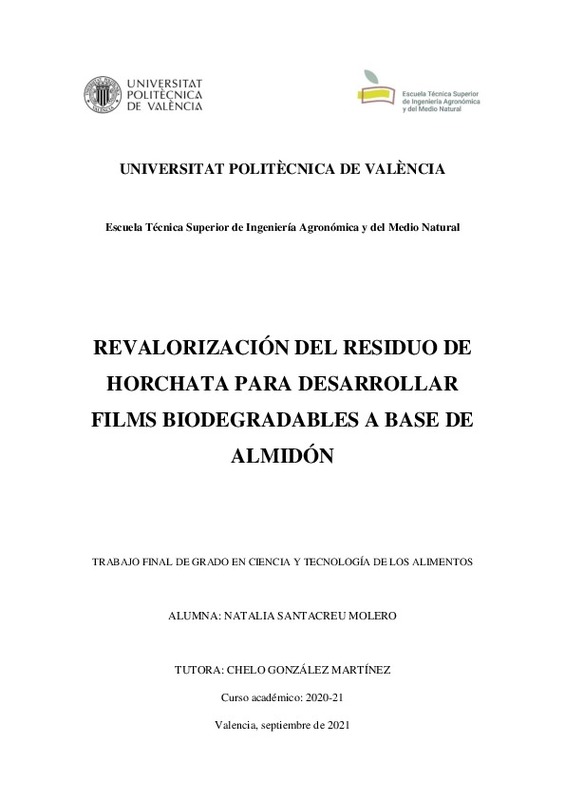JavaScript is disabled for your browser. Some features of this site may not work without it.
Buscar en RiuNet
Listar
Mi cuenta
Estadísticas
Ayuda RiuNet
Admin. UPV
Revalorización del residuo de horchata para desarrollar films biodegradables a base de almidón
Mostrar el registro completo del ítem
Santacreu Molero, N. (2021). Revalorización del residuo de horchata para desarrollar films biodegradables a base de almidón. Universitat Politècnica de València. http://hdl.handle.net/10251/174622
Por favor, use este identificador para citar o enlazar este ítem: http://hdl.handle.net/10251/174622
Ficheros en el ítem
Metadatos del ítem
| Título: | Revalorización del residuo de horchata para desarrollar films biodegradables a base de almidón | |||
| Autor: | Santacreu Molero, Natalia | |||
| Director(es): | ||||
| Entidad UPV: |
|
|||
| Fecha acto/lectura: |
|
|||
| Resumen: |
[ES] En línea con las recientes investigaciones en el aprovechamiento de subproductos vegetales enfocadas hacia la economía circular, en el presente trabajo se desarrollaron films a base de almidón de maíz y glicerol ...[+]
[EN] In line with the recent research on the use of vegetable by-products focused on the circular economy, in the present study, films based on corn starch and glycerol were developed
containing 0 (control), 40, 50 and ...[+]
|
|||
| Palabras clave: |
|
|||
| Derechos de uso: | Reserva de todos los derechos | |||
| Editorial: |
|
|||
| Titulación: |
|
|||
| Tipo: |
|
recommendations
Este ítem aparece en la(s) siguiente(s) colección(ones)
-
ETSIAMN - Trabajos académicos [3541]
Escuela Técnica Superior de Ingeniería Agronómica y del Medio Natural








